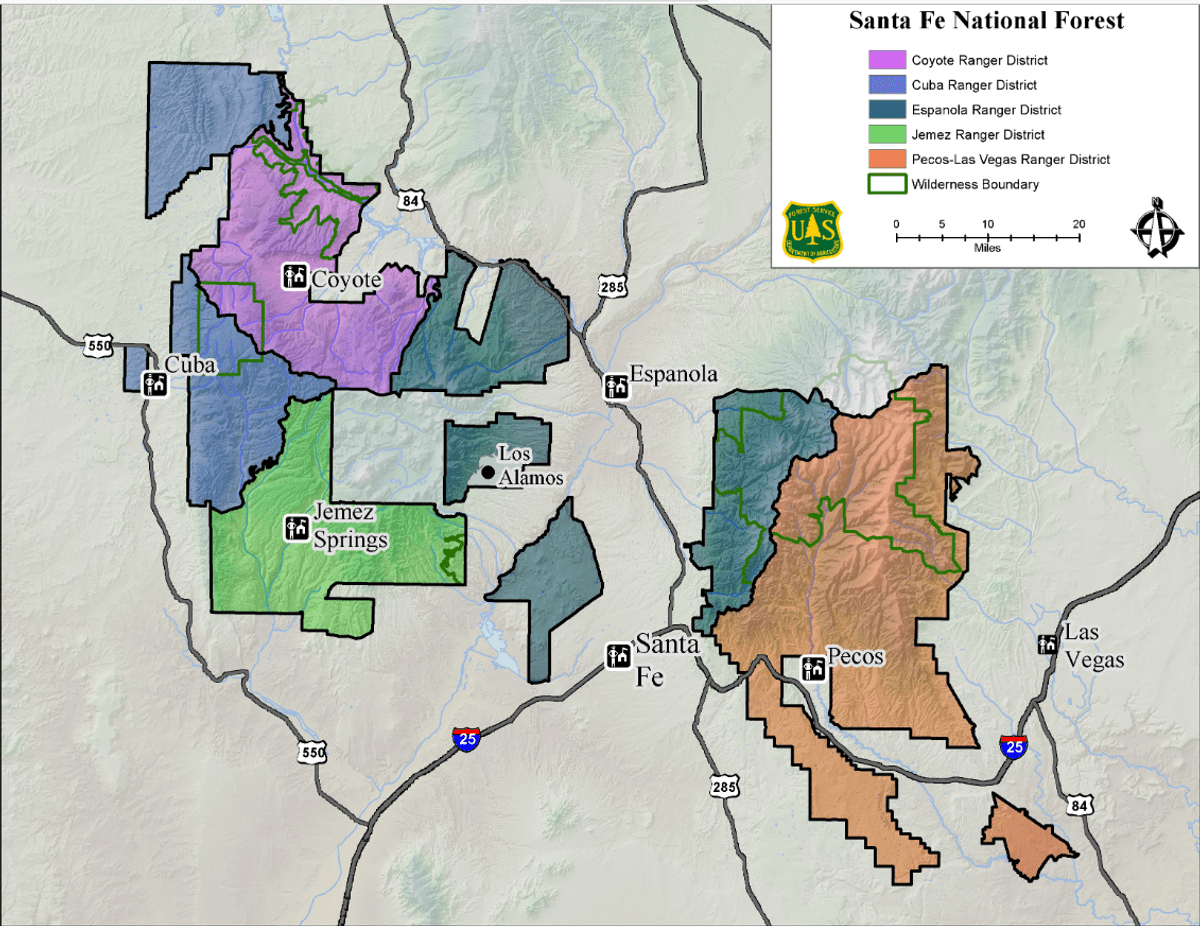Santa Fe NF--Golondrina Mesa IBA
Santa Fe NF--Golondrina Mesa IBA
Important Bird Area Wright Place, New Mexico 87027
Official WebsiteSanta Fe National Forest Official Website
Santa Fe National Forest maps
Birds of Interest
Cliffs and side canyons of the river and mesa provide habitat for nesting raptors. This stretch of the Chama provides a high-quality stream and other than rafters has very little human disturbance. Golondrina Mesa provides an excellent example of Ponderosa Pine forest in excellent condition. The area thus provides a relatively undisturbed bird habitat containing riparian, pinon-juniper, cliff face, and pine forest.
Dusky Flycatcher, Plumbeous Vireo, Pygmy Nuthatch, Western Bluebird, Grace's Warbler, Bald Eagle
About this Location
The Rio Chama is a major tributary of the Rio Grande. For 31 miles, it flows through a canyon (at times 1500 feet deep) and through designated wilderness. The river has towering cliffs, heavily wooded canyons, archeological sites, and dinosaur tracks. The Rio Chama was designated Wild and Scenic in 1988 and runs through six miles of wilderness. Colorful sandstone bluffs and rock formations rise to high rims on both riverbanks. Water levels reflect releases from El Vado Lake Dam. With access limited, most people don't visit the grassland that dominates the upland portion of the area. Varying elevations in the canyon provide a wide range of trees, from low-lying pinon-juniper to ponderosa pine and fir. Mammals include mule deer, black bear, elk, coyote, and mountain lion. Most of the wilderness lies in Santa Fe National Forest, with a portion in Carson National Forest. There are a few private in-holdings in the area.
Turn west off US-84 just north of Tierra Amarilla onto NM-112, drive southwest about 15 miles, then turn left on the short spur road to El Vado Ranch. This is the rafting put in. Return to US-84, turn right, and drive south about 27 miles. About 1.5 miles south of the turnoff to Echo Amphitheater Campground, turn right onto USFS-151. Follow this dirt road 5 miles southwest to the Big Eddy. This is the rafting takeout.
About Santa Fe National Forest
See all hotspots at Santa Fe National Forest
The Santa Fe National Forest is 1.6 million acres of mountains, valleys and mesas ranging from 5,000 to 13,000 feet in elevation. Visitors find forested mountains slopes, colorful volcanic formations, deep river gorges and primitive wilderness. Thousands of cultural and archaeological sites reflect the Santa Fe National Forest's rich historical heritage and the many cultures that value this landscape.
The Santa Fe National Forest has a number of special places, including wilderness areas, wild and scenic rivers, a national recreation area and scenic byways.
There are four wilderness areas on the forest. They cover almost 300,000 acres. Wilderness areas provide primitive recreation options.
The Wild and Scenic Rivers Act was passed by Congress in 1968 to protect outstanding free-flowing rivers.There are three wild and scenic rivers on the Forest: the Rio Chama, Pecos, and East Fork of the Jemez.
National recreation areas (NRAs) were established by Congress to preserve enhanced recreational opportunities in places with significant natural and scenic resources. NRAs emphasize a variety of activities for visitors, including hiking, camping, boating, fishing, swimming, biking, horseback riding, and wildlife viewing, in areas that include multiple-use management focused on conservation and limited utilization of natural resources. The Jemez National Recreation Area (JNRA), the only NRA in the Forest Service Southwestern Region, was designated by Congress in 1993 to conserve its recreational, natural and cultural resources.
The National Scenic Byways Program is a collaborative effort administered by the Federal Highway Administration that recognizes special roadways for their outstanding and unique historic, cultural, natural, archaeological, recreational and scenic qualities. The Santa Fe National Forest has two Scenic and Historic Byways.
Content from Santa Fe National Forest Official Website and John Montgomery
Last updated July 11, 2023
